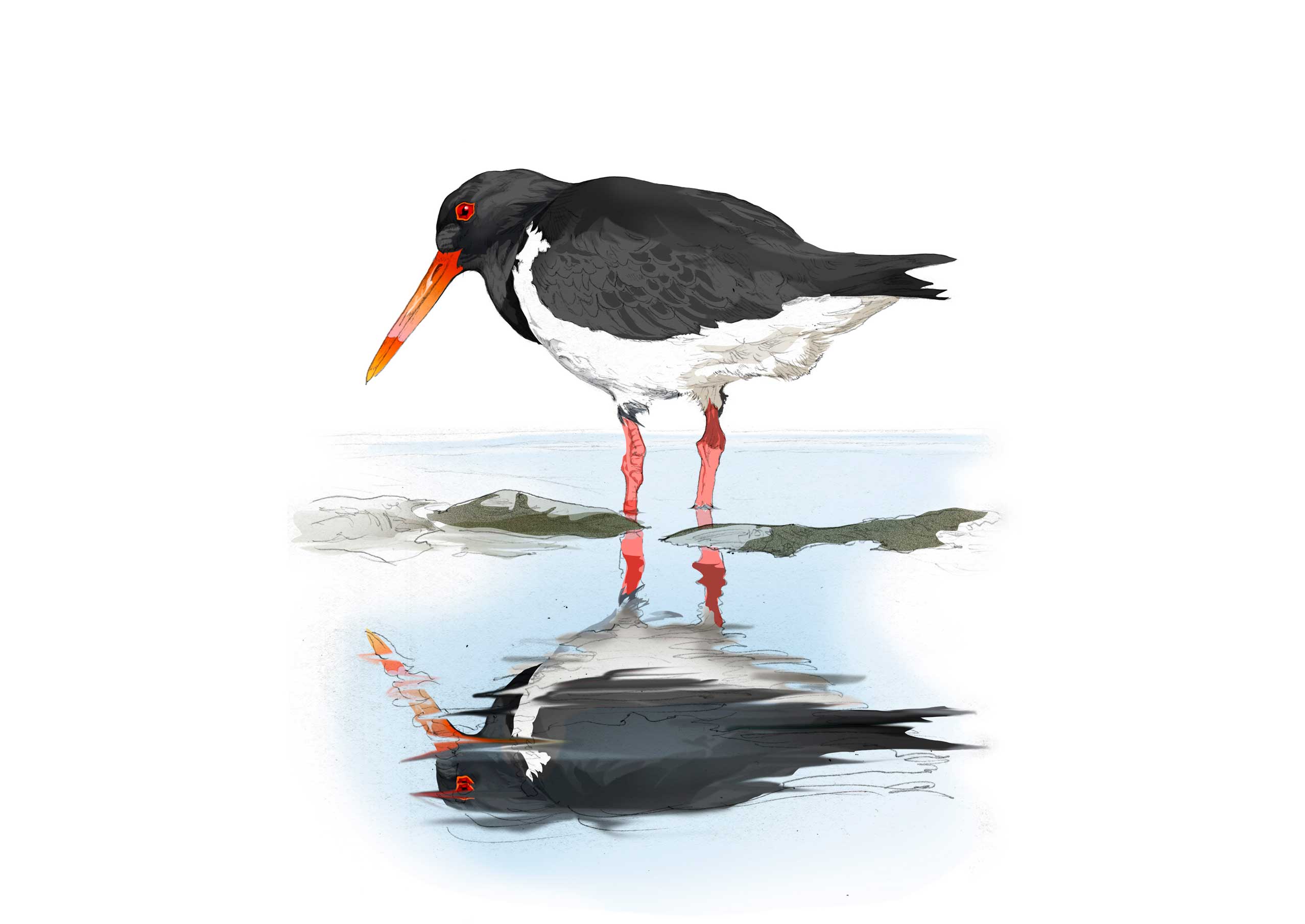
Haematopus ostralegus
Common on muddy, sandy or rocky coasts and estuaries, and sometimes inland by lakes and rivers.
The oystercatcher is one of the easiest birds to recognise. It is a large, black and white wading bird with a very long orange beak, red eyes and pink legs. Oystercatchers are very noisy birds and often gather in large flocks.
Oystercatchers feed mainly on mussels, limpets and other molluscs. They hammer the shells on rocks to break them open, or cut the muscle that holds the two halves of the shell together and then stab the soft creature inside to eat it. When breeding, oystercatchers prefer quiet shores away from disturbance. A pair of oystercatchers scrapes out a simple nest at the top of a beach, or on the bank of a river or lake, and lines it with tiny shells or pebbles. During April or May the female lays about three eggs and both parents help to keep them warm until they hatch. The chicks are really well camouflaged and are difficult to spot on a shingle beach. Both parents feed the chicks and protect them from predators until they can look after themselves. If a predator approaches, both male and female make a lot of noise to distract the predator and guide it away from the nest.
This oystercatcher is a common sight on the coast of the North York Moors National Park. However, it relies on undisturbed beaches and quiet lake shores and river banks for breeding, and these spots are becoming harder to find.
Like all ground nesting birds, oystercatcher chicks are easily disturbed by people and dogs. You can help by keeping your dog on a lead and avoiding getting too close to nest sites.